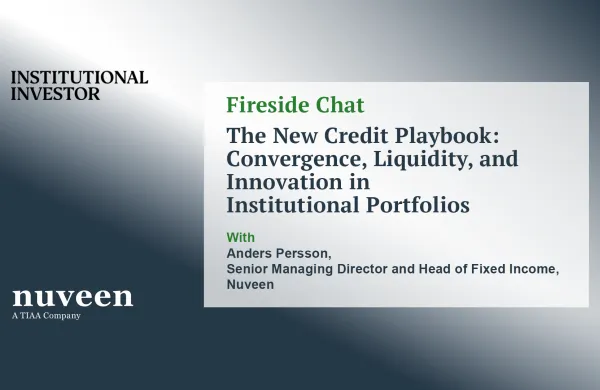Convertible bonds flew off the shelves last year, as more and more companies used the hybrid security as a financing tool. Yet convertibles remain a very small asset class in the portfolios of U.S. pension plans. In fact, no fund manager invests more than 5 percent of his portfolio in convertible bonds.
Although 5.2 percent of respondents say their allocation is higher than it was two years ago, 3.4 percent say their convertible allocation is somewhat lower than it was. More than 90 percent say it is about the same.
Just 5.8 percent of plan sponsors say they intend to increase the size of their convertible allocations in the next year; those that intend to do so say they will likely raise their stakes by between 3 and 5 percent.
That said, the explosion in the size of the convertible bond market last year, fueled in part by the participation of hedge funds, has encouraged plan sponsors to take a second look at the asset class. Some 16.3 percent say they are now more likely to invest in convertibles as a result of the expanded market. And for those plans who do intend to increase their convertible holdings next year, 25 percent say it is because the convertible market is much bigger than it used to be. Those that do buy convertibles do so conservatively; 42.9 percent of respondents invest 100 percent in investment-grade debt.
Others cite different inspirations. Twenty-five percent of respondents say they will beef up their holdings to reduce risk in their portfolio, while 50 percent say they will do so to reap the benefits of stable interest payments while at the same time participating in a stock's upside potential. Of course, upside potential was hard to find last year, with the Standard & Poor's 500 index off 13 percent, but 2002 has only just begun.
What percentage of your total assets is in convertible bonds?
0 to 5 percent 100.0%
6 to 10 percent 0.0
11 to 15 percent 0.0
16 to 20 percent 0.0
More than 20 percent 0.0
How does that compare with that of two years ago?
Substantially higher 0.0%
Somewhat higher 5.2
About the same 91.4
Somewhat lower 3.4
Substantially lower 0.0
How much of your convertible portfolio is in investment-grade-rated securities?
100 percent 42.9%
80 to 100 percent 14.3
60 to 80 percent 10.7
40 to 60 percent 10.7
Less than 40 percent 21.4
How does that compare with that of two years ago?
Substantially more 0.0%
Somewhat more 6.9
About the same 93.1
Somewhat less 0.0
Substantially less 0.0
How much of your convertible portfolio is in below-investment-grade-rated securities?
100 percent 7.4%
80 to 100 percent 3.7
60 to 80 percent 0.0
40 to 60 percent 3.7
20 to 40 percent 7.4
10 to 20 percent 0.0
5 to 10 percent 11.1
Less than 5 percent 66.7
How does that compare with that of two years ago?
Substantially more 0.0%
Somewhat more 7.1
About the same 92.9
Somewhat less 0.0
Substantially less 0.0
What effect does the deteriorating economic environment have on you?
More likely to invest in convertibles 9.3%
Less likely to invest in convertibles 4.7
No effect 86.0
What effect has the increase in the size of the convertible market over the past year had on you?
More likely to invest in convertibles 16.3%
Less likely to invest in convertibles 0.0
No effect 83.7
What is the average maturity of your convertible bond portfolio?
Two years or less 20.0%
Three to five years 55.0
Six to ten years 20.0
More than ten years 5.0
Do you expect to increase your allocation to convertibles in the coming year?
Yes 5.8%
No 94.2
If so, by how much?
1 to 2 percent 0.0%
3 to 5 percent 100.0
More than 5 percent 0.0
If you plan to increase your allocation to convertibles, why are you doing so?
To reduce portfolio risk 25.0%
To gain the stability of regular interest payments while participating in the upside growth of stock prices 50.0
To diversify our fixed-income portfolio 0.0
The convertible market is much bigger than it used to be 25.0
If you do invest in convertibles, do you treat them as a separate asset class?
Yes 13.0%
No 87.0
If you don't invest in convertibles, why not?
Don't want to pay a conversion premium and would rather own the stock itself 23.5%
Convertibles are primarily issued by nondiverse, non-investment-grade, small-cap companies 17.6
Convertible market is too small for comfort 5.9
Can't easily categorize convertibles within asset allocation scheme 14.7
Other 38.2
The results of Pensionforum are based on quarterly surveys of a universe of 800 corporate and 250 public pension plan sponsors. Because of rounding, responses may not total 100 percent.





